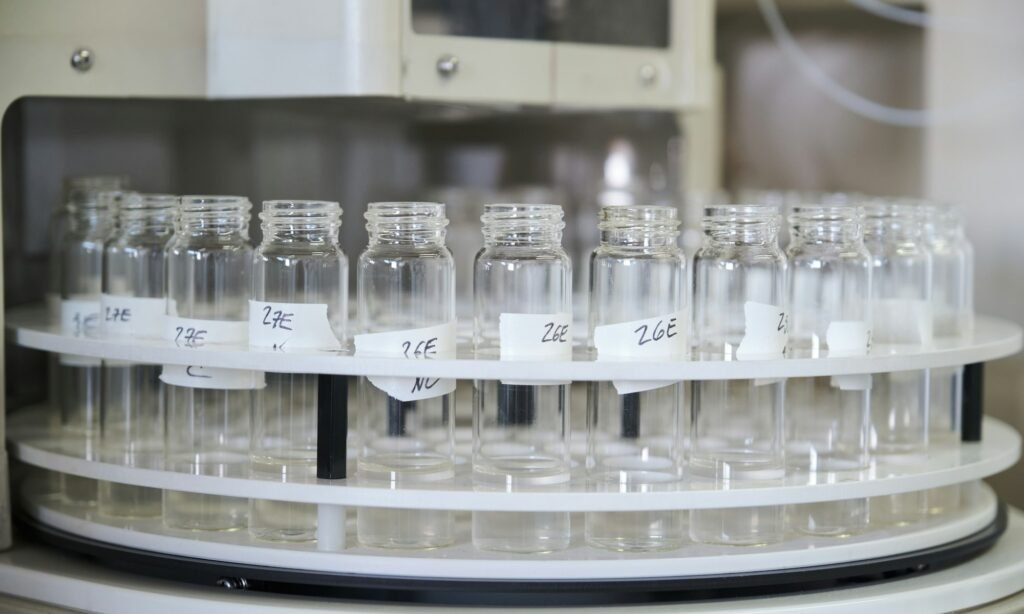What is TOC (Total Organic Carbon)?
When you hear the term TOC, especially in industries related to water treatment, environmental science, or even some manufacturing processes, it might sound like just another scientific jargon. But trust me, once you dig deeper, it becomes clear how crucial this concept is.
TOC stands for Total Organic Carbon, and it refers to the total amount of carbon found in organic compounds in a given sample.
Now, what exactly does that mean for you? Well, the presence of organic carbon in any environment can significantly impact the quality and safety of products, water, and even air. This is why understanding TOC levels can be vital for businesses, especially those dealing with water purification, food production, pharmaceuticals, or any industry where purity and safety are non-negotiable.
Why Should You Care About TOC?
Here’s the thing—whether you’re in manufacturing, environmental services, or even quality control, keeping track of TOC levels can save you from potential product failures, regulatory issues, and costly cleanups. What do you think? Have you ever had a situation where unexpected contamination affected your production line?
TOC measurement is one of the most effective ways to monitor organic contamination. In the case of water purification, for example, TOC analysis ensures that no unwanted organic materials are present that could affect the taste, safety, or quality of the water. In pharmaceutical manufacturing, high TOC levels might indicate that a cleaning process was ineffective, leading to possible contamination of drugs or medical devices.
So, why is TOC used as such an important metric? It’s because it’s directly linked to the presence of pollutants or contaminants in the sample. The higher the TOC, the more contaminants are likely present.

What Does TOC Measurement Involve?
When measuring TOC, the primary goal is to determine the concentration of organic carbon in a sample. The process generally involves oxidizing the organic carbon into carbon dioxide (CO₂), which is then measured using specialized instruments. There are various methods of measuring TOC, including combustion, UV oxidation, and high-temperature catalytic oxidation.
Here’s a quick breakdown of how it typically works:
- Sample Collection: The first step involves collecting a water or air sample.
- Oxidation Process: The sample is treated with a chemical or heated to high temperatures to break down organic carbon into CO₂.
- Measurement: The resulting CO₂ is measured using a detection method, such as infrared spectroscopy or a non-dispersive infrared (NDIR) sensor.
- Calculation: The final TOC value is calculated based on the concentration of CO₂ measured, which correlates to the amount of organic carbon present.
It sounds a bit technical, right? But once you get the hang of it, the process makes perfect sense. After all, when it comes to maintaining high-quality standards, accuracy is key.
The Role of TOC in Different Industries
- Water Treatment
In industries where water purity is crucial, such as food and beverage manufacturing or pharmaceuticals, TOC monitoring plays a vital role. Why? Because water quality impacts everything—from production processes to the final product quality. High TOC levels in treated water can indicate insufficient purification and the presence of harmful microorganisms or organic pollutants. - Pharmaceuticals and Biotech
In these sectors, high TOC levels can affect product safety and lead to contamination in critical manufacturing processes. Regulatory agencies, like the FDA, require strict monitoring of TOC levels to ensure drug and device purity. This is one area where you definitely don’t want to cut corners. - Environmental Monitoring
Environmental agencies use TOC testing to measure organic pollutants in air and water. It helps in assessing the quality of natural resources and identifying contamination sources. Whether you’re dealing with wastewater or atmospheric air quality, TOC monitoring helps keep things clean and safe.
Challenges in TOC Monitoring
But, like anything else, measuring TOC comes with its challenges. The biggest issue tends to be the precision of measurement, especially when it comes to very low levels of organic carbon. Devices used in TOC testing, although advanced, can be quite sensitive to variations in sample composition, leading to errors. Plus, the methods used for testing can sometimes be costly and require specialized training.
Have you ever faced any challenges when trying to keep track of these levels in your business? For example, have you struggled with calibration issues or inaccurate readings?
Another challenge is interpreting the results, especially when working with complex matrices like industrial effluents or environmental samples. Sometimes, the organic carbon detected might not come from obvious sources, making it tricky to pinpoint the exact source of contamination.
How to Optimize TOC Levels in Your Business
Now that we’ve covered what TOC is and why it matters, let’s talk about how you can optimize it for your business. Here are a few practical steps:
- Regular Monitoring: Make it a habit to check TOC levels regularly, especially in water treatment and food production. The earlier you detect a rise in TOC levels, the quicker you can address the issue.
- Improve Treatment Processes: If your TOC levels are consistently high, it might be time to revisit your treatment methods. Upgrading filtration systems or enhancing your purification processes can make a significant difference.
- Employee Training: Ensure that your team knows how to handle TOC testing and understands the importance of maintaining low levels. A well-informed team can prevent errors that could lead to contamination.
Conclusion
So, to sum it all up: Total Organic Carbon is more than just a number. It’s a critical metric that can directly affect your product quality, safety standards, and regulatory compliance. Whether you’re in water treatment, manufacturing, or pharmaceuticals, understanding TOC and how to manage it is key to avoiding costly mistakes and ensuring a high-quality output.
Do you think your business could benefit from better TOC monitoring? If you’re still unsure about its importance, think about the last time you encountered contamination issues. Could TOC testing have helped identify the problem earlier? It’s all about being proactive, not reactive.











